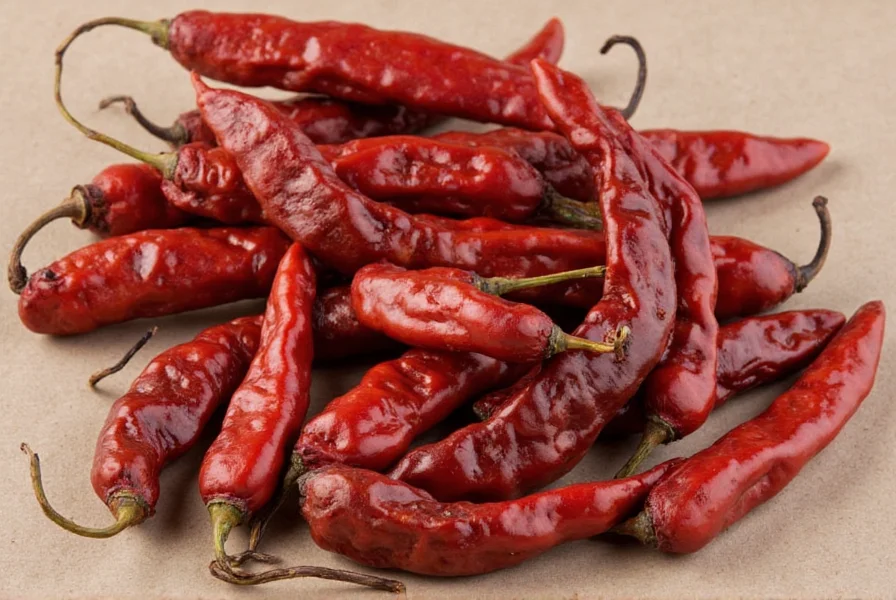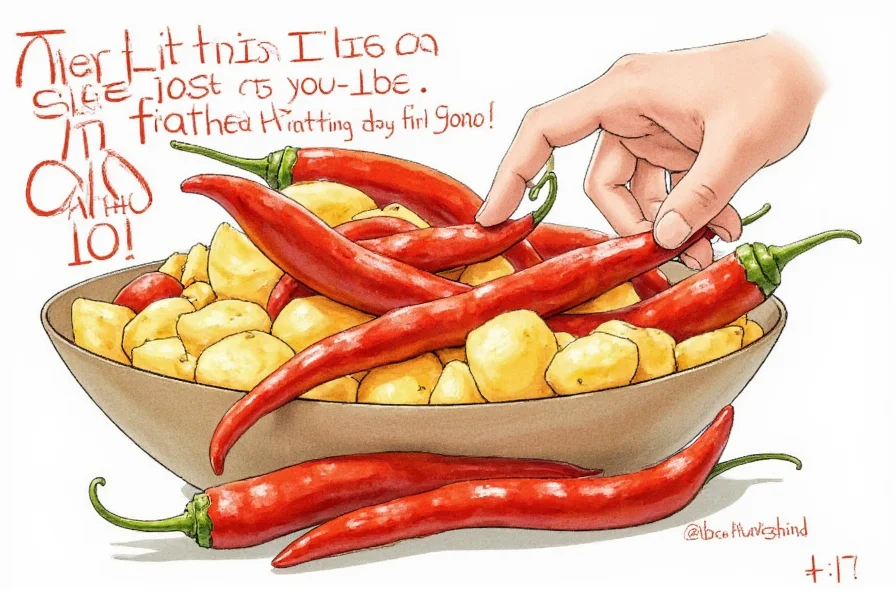| Feature | Good Quality | Avoid These |
|---|---|---|
| Color | Deep red or maroon | Pale or faded red |
| Texture | Smooth, flexible skin | Dry, brittle, cracked |
| Aroma | Rich, sweet, and slightly smoky | Moldy, musty, or off-smell |
| Origin | Mexico-grown (especially Oaxaca or Puebla) | Unclear or non-traditional growing regions |
Ancho chili is the dried form of the poblano pepper, known for its mild heat (1,000-2,000 Scoville Heat Units) and rich, smoky flavor with notes of chocolate, raisin, and earthiness. It's a staple in Mexican cuisine for sauces, stews, and rubs.

What Is an Ancho Chili?
When fresh, poblano peppers are mild and green. Once dried and ripened, they become ancho chilis with deeper, sweeter flavors. This transformation makes them ideal for adding complexity without overwhelming heat.
Why Ancho Chilis Are Essential in Your Kitchen
- Flavor versatility: Adds sweet, smoky depth to both savory and sweet dishes
- Mild heat: Safe for all palates while still providing authentic chili character
- Nutritional benefits: Rich in vitamins A and C, and antioxidants
- Long shelf life: Dried chilis stay fresh for up to a year when stored properly
How to Use Ancho Chilis: 5 Essential Recipes
1. Classic Ancho Chile Enchilada Sauce
- Soak 3 dried anchos in hot water for 20 minutes
- Blend with 1 cup tomatoes, 2 garlic cloves, 1 onion, 1 tsp cumin, and 1/2 cup broth
- Simmer for 10 minutes until thickened
2. Ancho Chile Rub for Pork
- Combine 2 tbsp ground ancho, 1 tbsp brown sugar, 1 tsp smoked paprika, 1 tsp garlic powder, and 1/2 tsp salt
- Apply to pork shoulder before slow cooking
3. Chocolate-Ancho Brownies
- Add 1 tbsp ground ancho to your brownie batter for a subtle spicy-sweet twist
- Perfect for gourmet dessert enthusiasts
4. Ancho Chile Mole Sauce
- Simmer 4 anchos with 1 cup tomatoes, 1/2 cup almonds, 1/4 cup raisins, and 2 tbsp sesame seeds
- Blend until smooth for authentic mole
5. Ancho Chile Infused Oil
- Heat 1 cup olive oil with 2 sliced anchos over low heat for 15 minutes
- Strain and use for drizzling on grilled vegetables or bread
Ancho Chili Buying Guide
| Feature | Good Quality | Avoid These |
|---|---|---|
| Color | Deep red or maroon | Pale or faded red |
| Texture | Smooth, flexible skin | Dry, brittle, cracked |
| Aroma | Rich, sweet, and slightly smoky | Moldy, musty, or off-smell |
| Origin | Mexico-grown (especially Oaxaca or Puebla) | Unclear or non-traditional growing regions |

Storage Tips to Preserve Flavor
- Whole chilis: Store in airtight container away from light and moisture (up to 1 year)
- Ground powder: Keep in sealed glass jar for up to 6 months
- Rehydrated chilis: Refrigerate for 5 days or freeze for longer storage
Ancho vs Other Chilies: Quick Reference
| Chili Type | Heat Level (SHU) | Flavor Profile | Best Use |
|---|---|---|---|
| Ancho | 1,000–2,000 | Earthy, fruity, mild smokiness | Soups, sauces, rubs, mole |
| Guajillo | 2,500–5,000 | Tangy, berry-like, moderate spiciness | Salsas, marinades, moles |
| Chipotle | 5,000–10,000 | Smoky, bold, intense heat | Stews, BBQ sauces, adobo |
| Jalapeño (dried) | 2,500–8,000 | Grassy, sharp, tangy | Snacks, tacos, infused oils |
| Hatch Green Chile | Varies | Green bell pepper meets citrus and spice | Enchiladas, posole, roasting |
Frequently Asked Questions
What's the difference between ancho chilis and poblano peppers?
Ancho chilis are simply dried poblano peppers. When fresh, they're called poblanos; once dried and ripened, they become anchos with a deeper, more complex flavor profile.
How hot are ancho chilis compared to other peppers?
Ancho chilis are quite mild, ranging from 1,000 to 2,000 Scoville Heat Units. For comparison, they're milder than jalapeños (2,500-8,000 SHU) and much milder than habaneros (100,000-350,000 SHU).
Can I substitute ancho chilis with other dried chilies?
Yes, but with flavor differences. Guajillo chilis are a good substitute with similar mild heat but more tangy flavor. Mulato chilis are closest in flavor (also made from dried poblanos but from a different variety) but can be harder to find.
How do I properly rehydrate ancho chilis?
Place the dried chilis in a bowl, cover with hot water, and let soak for 20-30 minutes until softened. For enhanced flavor, you can soak them in broth, beer, or even orange juice instead of water.
What dishes work best with ancho chilis?
Ancho chilis shine in mole sauces, enchilada sauces, meat rubs, soups, stews, and even chocolate-based desserts. Their mild heat and complex flavor make them versatile for both savory and sweet applications.
How long do ancho chilis stay fresh?
Whole dried ancho chilis can stay fresh for up to a year when stored properly in an airtight container in a cool, dark place. Ground ancho chili powder has a shorter shelf life of about 6 months before flavor begins to degrade.

Ancho chilis transform ordinary dishes into extraordinary meals with their unique flavor profile. Whether you're making authentic mole sauce or adding depth to chocolate desserts, these versatile chilis are a must-have in any kitchen.










 浙公网安备
33010002000092号
浙公网安备
33010002000092号 浙B2-20120091-4
浙B2-20120091-4